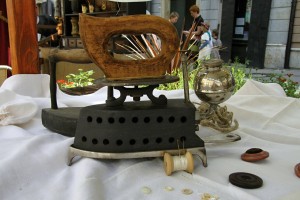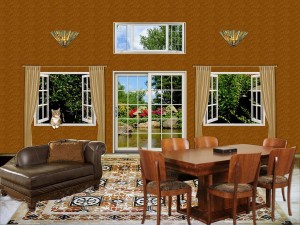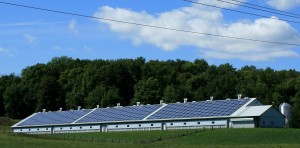Being energy efficient can help reduce your carbon footprint on the globe. It’s not only for the environment but it will also help your wallet.
There are many ways you could make your home energy efficient and save energy. It would not only reduce your impact on the environment but also save you on energy bills. When homes use less energy to heat up or stay cool, they can really reduce our carbon footprint on the environment. It could be as easy as turning off the lights when you leave the room or something a bit more complicated like building and installing solar water heaters.
What does this mean for me?
Energy efficient homes are a combination of energy efficient design, construction and appliances, and using reusable energy sources to power our homes such as solar water heating and solar electricity. The benefits could benefit us in the following ways:
- Lower energy bills and improved comfort
- Energy reliability and security
- Environmental sustainability
(Source: Department of Energy)
Here are five things you could do to make your home more energy efficient so that you use less energy to keep your home heated and cooled, use fewer resources and reduce your carbon footprint in the process.
1. Seal and insulate your house.
Plugging up all the holes around your doors and windows can reduce your electric bills. When heat and cold escape through holes it drives up your energy bills. Holes could be anywhere in or around your utility lines, siding, and roofing or around windows and air and vent ducts. Use weather stripping or caulking to seal these holes. Replace and service old heating and cooling ducts and ventilation systems. Use additional insulation on your attic and check if you need more insulation around the house in your walls. A better insulated home will need less energy to keep the temperature at comfortable levels. Here’s a good link to determine how much insulation to add to a new or existing house: Insulation Calculator
2. Replace old doors and windows 
Your windows are major source through which heat and cold escape from your home. Replace old windows with energy efficient windows that reduce heat transfer. Check for the energy star ratings on your windows. Investing a little on new energy efficient windows and doors could save you a lot of money in the long run. If you have aluminum windows, consider replacing them with vinyl windows.
3. Replace old appliances
If you have old appliances such as washing machines, refrigerators, microwaves ovens, vacuum cleaners and so on, they could be just guzzling up your energy. Replace them with newer, more energy efficient models. Check for Energy Star certified appliances. This Energy Star Refrigerator Calculator could help you find out how much you could save with Energy Star appliances.
4. Replace Incandescent and CFL Light bulbs with LED
Although LED light bulbs would cost more initially, you would actually save in the long run. Take a look at the table below and compare.
| LED | CFL | Incandescent | |
| Light bulb projected lifespan | 50,000 hours | 10,000 hours | 1,200 hours |
| Watts per bulb (equiv. 60 watts) | 10 | 14 | 60 |
| Cost per bulb | $35.95 | $3.95 | $1.25 |
| KWh of electricity used over 50,000 hours |
300 500 | 700 | 3000 |
| Cost of electricity (@ 0.10per KWh) | $50 | $70 | $300 |
| Bulbs needed for 50k hours of use | 1 | 5 | 42 |
| Equivalent 50k hours bulb expense | $35.95 | $19.75 | $52.50 |
| Total cost for 50k hours | $85.75 | $89.75 | $352.50 |
The following table compares the total household cost for LED, CFL and Incandescent bulbs over 50,000 hours, assuming 25 bulbs per household.
| Total cost for 25 bulbs | $2143.75 | $2243.75 | $8812.50 |
| Savings by switching from incandescent |
$6668.75 | $6568.75 | 0 |
This clearly illustrates the long term cost savings of both LED and CFL over incandescent and even though LED lights are more expensive than CFLs, they still are slightly cheaper over the long term.
(Table Credit: Green Wiki)
5. Install a solar energy system
 Installing solar cells or thermal solar systems would reduce your energy bills. They could be used for heating water or heating your house with sunlight. They could also be used to produce electricity. When you produce your own electricity, it could ease off some of the pressure from the national grid.
Installing solar cells or thermal solar systems would reduce your energy bills. They could be used for heating water or heating your house with sunlight. They could also be used to produce electricity. When you produce your own electricity, it could ease off some of the pressure from the national grid.
Hope you will be able to benefit from the tips given here. Remember to conserve energy as much as possible and plant more trees to get natural shade and help your surroundings to stay cooler this summer.
We’ll be back with more updates on technology that reduces negative impacts on the globe. Please read our blogs regularly and don’t forget to add your thoughts in the comment box below.
We’d love your feedback and comments on this article so, please feel free to add your comments on our Facebook page, we’d really appreciate it.
Source: Environmental Professionals Network
Related articles and resources:
- Reducing Our Environmental Footprint For Better Sustainability | Environmental Professionals Network
- Build Your Own Solar Water Heater- DIY Project | Environmental Professionals Network
- Ultra-Efficient Home Design | Department of Energy
- How to make Your House more Energy efficient – Green Wiki
- How to Make Your Home Energy Efficient – 11 Easy Steps
- 10 Energy-Efficient Home Improvements – US News
- ENERGY STAR Most Efficient 2015 : ENERGY STAR
- Choosing Energy Efficient Windows for Your Home | Home Remodeling – Ideas for Basements, Home Theaters & More | HGTV



